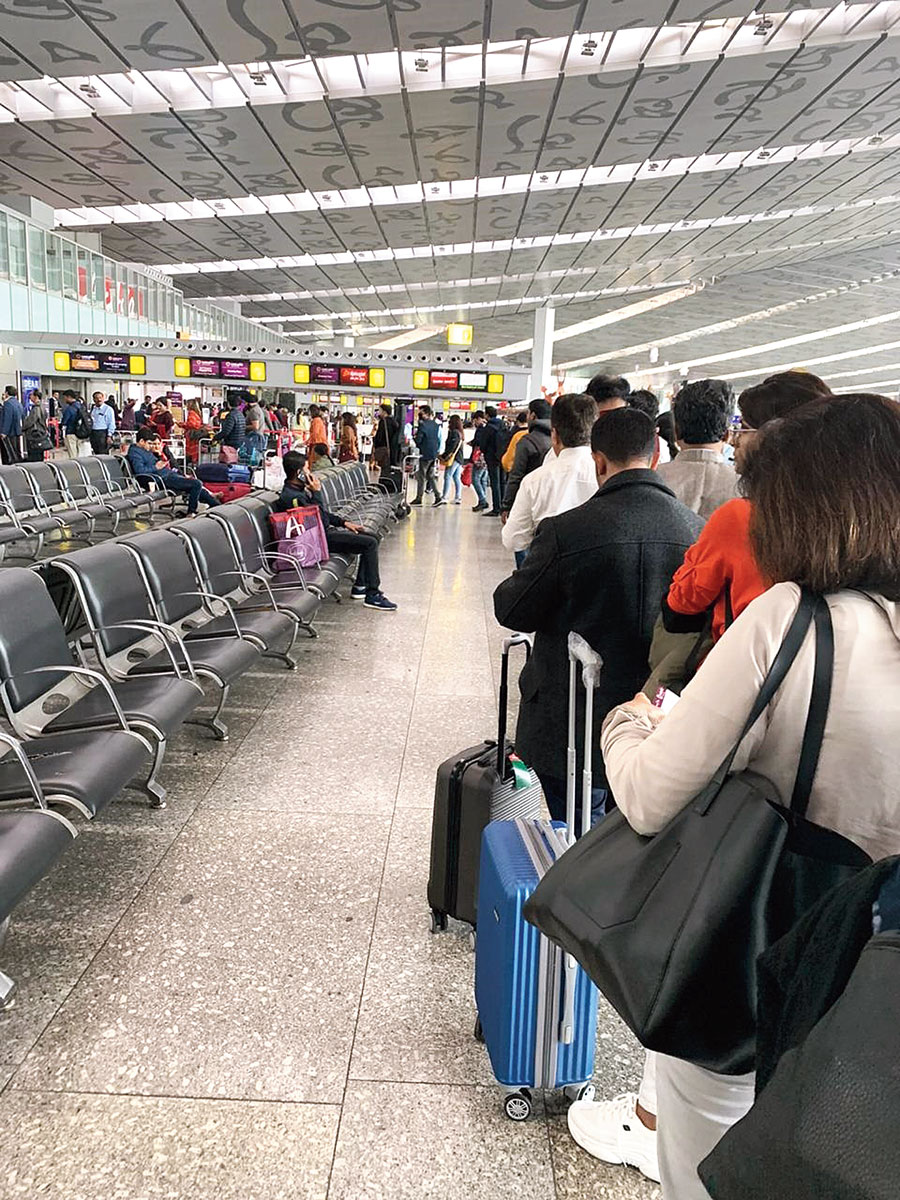The inline baggage screening system, which formally became operational at the Calcutta airport on Monday, has made check-in easier but passengers are still hassled by long queues for security check.
The Calcutta airport authorities blame it on some measures announced recently to step up security, flawed design of the terminal building and a delay in the arrival of equipment that would make X-ray screening of hand baggage faster.
The congestion is mainly in the domestic section of the terminal building.
The authorities are planning to deploy “floor walkers”, who will assist passengers who have been stuck in the queues and could miss flights.
Model-actress Richa Sharma, who flew to Mumbai from Calcutta earlier this month, said she had to stand in a queue for security check for almost an hour.
“The Vistara flight was to take off at 10.30am. The queue for security check had spilled over and reached almost the gate of the terminal building. No one was spotted managing the queue and it took us more than 45 minutes to reach the X-ray counter. It was 10am when we reached the boarding gate,” Sharma said.
The Telegraph spoke to the airport authorities, airlines and passengers to find out the reasons for the long queues.
New rules
The Bureau of Civil Aviation Security had issued circulars a few months back stating that it was mandatory for passengers to take off their belts during the security check-in, said sources in the Central Industrial Security Force, the agency that looks after security of the airport.
“Passengers have to take off their belts, which are passed through the X-ray scanner along with the hand baggage. This is only lengthening the process. The authorities have also issued another circular stating that passengers will have to take off shoes if the alarm in the door-frame metal detector beeps when they walk through it with their shoes on,” an airport official said. “All these are adding to the delays.”
Design flaw
Calcutta airport’s domestic section has four security check clusters, each with several X-ray counters and frisking booths. Each cluster is separated from the rest. So, the clusters have separate queues.
“It’s often seen that two of the security clusters are less congested than the others. Since the clusters are not interlinked, the crowd cannot be evenly distributed,” an airport official explained. “Passengers who are in a hurry often tend to stand in the queue at the nearest cluster. At times there is no one to guide the passengers to the less congested clusters.”
In contrast, airports in Delhi and Mumbai have open security-hold clusters, said officials. A serpentine queue takes passengers to a common area, from where the crowd is evenly distributed among the X-ray counters.
“Calcutta’s new terminal building has been designed in a way that the clusters cannot be linked with one another,” an official at the airport said.
Archaic technology
The domestic security check-in clusters at Calcutta airport have 11 X-ray counters, of which only two have the automatic tray retrieval (ATR) system. The automatic system makes retrieval of trays, on which passengers keep their belongings for screening, faster.
“The remaining nine will get the ATR system soon,” an official said. The installation was scheduled for March but has been deferred to April.
“The installation could be further delayed because the system has to be imported from China, where the production units are probably closed because of the coronavirus outbreak,” an official said.
“Besides, the rollers in the old X-ray machines, which move the trays forward, have worn out and the system has slowed down.”
Officialspeak
Airport officials said a sharp rise in the passenger count and the number of flights has intensified the problem.
“The situation is likely to improve because we will deploy floor walkers to help passengers. The floor walkers, who are airport employees, will guide passengers to less congested clusters,” a senior official of the airport said. “Also, once all X-ray counters are armed with the automatic tray retrieval system, the congestion will reduce further.”











